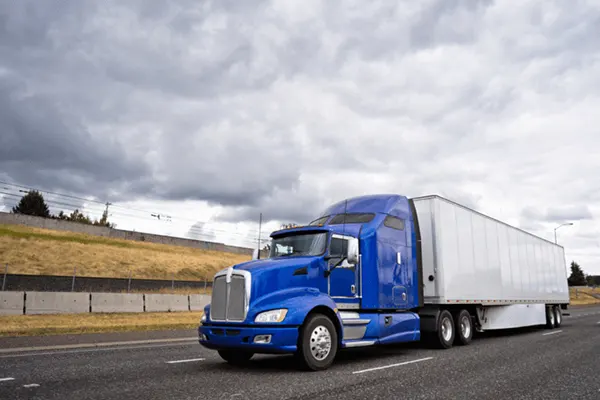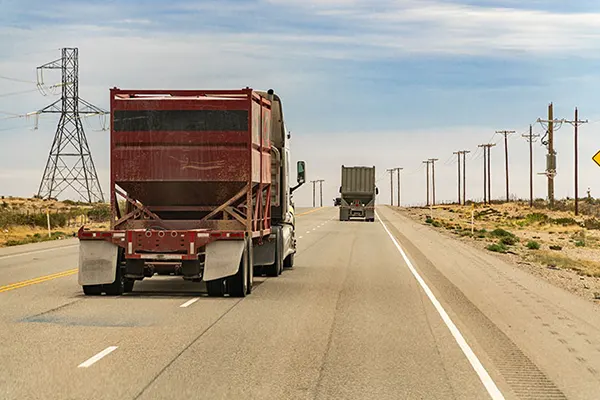
Is Team Driving for you?
Lately, Sage Truck Driving Schools have seen a handful of students enrolling with the intent of becoming team drivers upon graduating. With this in mind, we decided to post some thoughts on the subject.
What is Team Driving?
Team Truck Driving is when two people share the driving time in one truck. By law, solo drivers must periodically stop and rest before they are allowed to continue driving. Every driver has a 14-hour on-duty cap and an 11-hour driving cap, per day they have to abide by. Team driving eliminates the down time, as one can rest while the other drives. This allows a truck to keep moving, virtually 24 hours a day.
It’s no surprise that trucking companies love teams. It maximizes their profit margin by keeping their trucks moving around the clock. Because of this, team driving is obviously in high demand. Some new drivers find it to be a good way to get their foot in the door at a reputable company right out of school.
Many carriers are paying top dollar mileage and giving hefty sign on bonuses to team drivers. Do a Google search and you’ll see companies offering upwards of $30,000 right now, with no experience necessary. For some, that is the icing on the cake, they just can’t pass up.
Why not Team Drive?
So, what’s the downside? For starters it’s safe to say it’s definitely not for everyone. Even if you have a qualified good friend or spouse, it doesn’t necessarily mean it’s a good fit for you. It’s important to be honest with yourself before making this leap. Are you someone who prefers a good amount of alone time? Are you easily aggravated with others’ bad habits? Keep in mind, you will be spending a lot of time in close quarters with your partner. If you have a hard time doing that at home, or on vacation, it might be even harder on the road.
Ironically, some couples find they actually saw less of each other than they used to. Time together was often limited to the two hours the non-driver was allowed to sit in the front seat before the mandated eight consecutive hours in the sleeper berth.
Whether it’s a significant other or a good friend – compatibility, patience, understanding, and flexibility are all key components to making it work. If you and your partner feel confident you can manage it, team driving can be very lucrative, and in many cases a great way to enjoy this beautiful country together.
What specific qualifications and requirements must both drivers meet to become team drivers?
To become team drivers, both individuals must possess a valid Commercial Driver’s License (CDL). Typically, this involves passing both a written exam and a driving skills test. Additional endorsements may be needed depending on the type of cargo or the vehicle they will be driving. Both drivers must also meet the physical and medical requirements set forth by the Department of Transportation (DOT). It’s important that each driver has a clean driving record as well, as many trucking companies will look into past driving history when considering candidates for team driving positions.
How do trucking companies match drivers who don’t already have a partner?
- Trucking companies often assist in pairing drivers for team operations if they do not already have a partner. This process can involve assessments of driving styles, personality matching, and scheduling preferences to find compatible pairs. Some companies may use internal programs or software to help match drivers based on these factors. Additionally, companies might allow drivers to meet or do trial runs together before making the pairing official to ensure a good fit.
What are the typical routes or assignments for team drivers compared to solo drivers?
Team drivers are often assigned longer routes that require continuous driving beyond the hours a solo driver can legally manage. These might include cross-country or transcontinental routes that are critical for timely deliveries of goods. The ability to keep the truck moving continuously allows companies to meet tight delivery schedules and manage long hauls more efficiently. In contrast, solo drivers are more likely to be assigned to shorter routes or those that allow for daily returns home or regular breaks, aligning with the mandated rest periods.
Disclaimer: The information in this article is based on the data available as of its writing and is meant to inform and guide prospective CDL trainees. For the most current information and specifics about CDL training programs, please contact SAGE Truck Driving Schools directly.
Please fill out the information below and our team will reach out to chat about your options.


